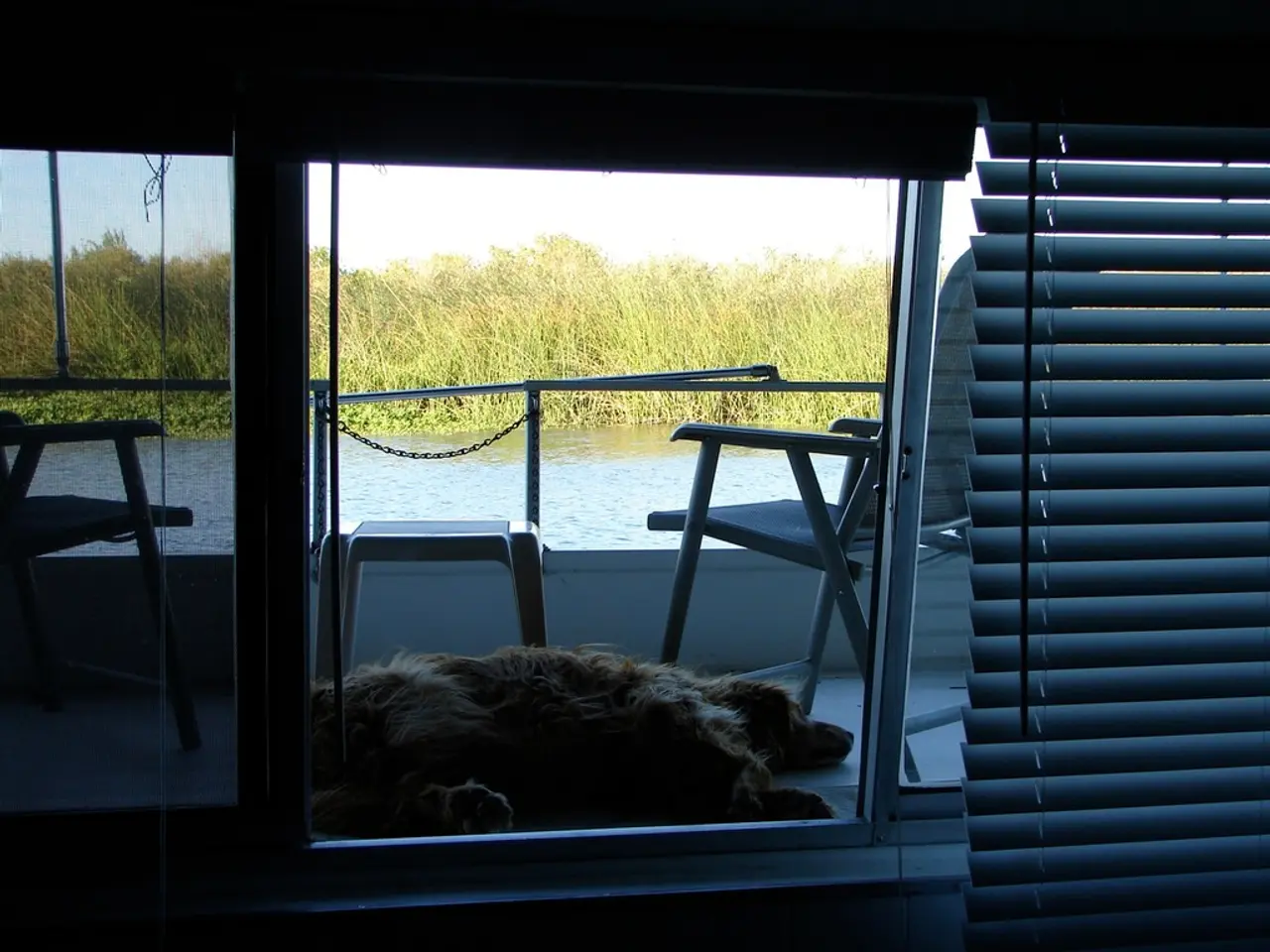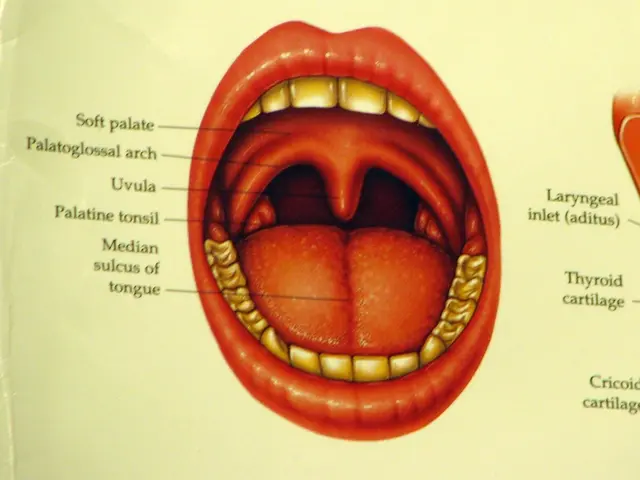Guidelines for safeguarding your canine companion during summer heatwave
**Keeping Your Dog Safe in Summer: A Guide to Preventing Heat-Related Illnesses and Other Hazards**
As temperatures rise, it's essential to take extra precautions to ensure our furry friends stay healthy and comfortable. Here are some tips to help you identify heat-related conditions, prevent illness, and be aware of other summer hazards for dogs.
**Identifying Heat-Related Conditions**
Early signs of overheating or mild heat exhaustion in dogs include excessive panting, seeking shade, drinking more water than usual, drooling, rapid breathing, bright red gums, weakness or lethargy, and pinker gums (not bright red or purple). Serious heat stroke signs may develop rapidly and include bright red or purple gums, vomiting and diarrhea, disorientation or staggering, collapse or seizures, and unconsciousness or coma in severe cases.
**Handling Heat-Related Conditions**
In case of heat-related conditions, immediate cooling is crucial. Move your dog to a shaded or air-conditioned area, apply cool (not cold) water to paws, belly, groin, underarms, and head, use wet towels and a fan to help increase cooling, offer small sips of cool water if your dog is conscious and able to drink, and avoid ice or very cold water as it can cause shock. If symptoms are moderate or severe, or your dog does not recover quickly, contact an emergency vet immediately.
**Preventing Heat-Related Illness**
To prevent heat-related illness, avoid exercise during peak heat hours, never leave dogs unattended in cars, provide constant access to shade and fresh, cool water, use multiple water bowls and bring portable water on walks, and monitor ground temperature; if pavement is too hot for your hand, it’s unsafe for paws.
**Other Summer Hazards**
Be aware of other summer hazards like bee or wasp stings, heat-retaining surfaces, toxic plants, and stagnant water containing blue-green algae or bacteria. Check your dog thoroughly after hikes or walks in wooded or grassy areas.
**Preventing Parasites**
Fleas, ticks, and mosquitoes can cause serious health issues and transmit diseases. To protect your pup from parasites, keep them on year-round parasite prevention as recommended by your veterinarian.
**Dehydration**
Hydration is one of the most critical ways to protect dogs during hot weather. Always offer fresh, cool water throughout the day. Signs of dehydration to watch for include dry gums, sunken eyes, loss of skin elasticity, lethargy, and if dehydration is suspected and the dog refuses water, seek veterinary advice immediately.
**Sunburn and Senior Dogs**
Sunburn can lead to red, flaky, or painful skin and increases the long-term risk of skin cancer. Senior dogs, puppies, and those with underlying health conditions have less efficient thermoregulation and should be closely monitored in hot weather. To protect your dog from sunburn, limit sun exposure during peak hours, provide ample shade when outdoors, and consider using pet-safe sunscreen.
**Humidity and Brachycephalic Breeds**
Humidity increases the danger for dogs, as it interferes with their ability to cool themselves through panting. Brachycephalic breeds, such as bulldogs, pugs, Boston terriers, and shih tzus, have shorter nasal passages and are more at risk for overheating.
**Foxtails**
Foxtails are a dangerous but often overlooked summer hazard. Foxtails can burrow into your dog's skin, causing painful infections or even migrating internally.
**Be Proactive**
Always be proactive, not reactive, in protecting your dog during the summer. Plan ahead by walking early or late in the day, carrying water, avoiding hot surfaces, never leaving your dog in a parked car, and keeping parasite preventatives up to date. By closely observing your dog for these signs and responding quickly with cooling and professional care, you can effectively manage and prevent heat-related illnesses during summer.
In the realm of health-and-wellness for dogs, it's crucial to consider science-backed methods for keeping them safe during summer, such as identifying early signs of heat-related illnesses,, and taking preventative measures to avoid such conditions. Examples of these signs include excessive panting, seeking shade, and bright red gums, while prevention strategies include avoiding exercise during peak heat hours and providing constant access to shade and cool water.




